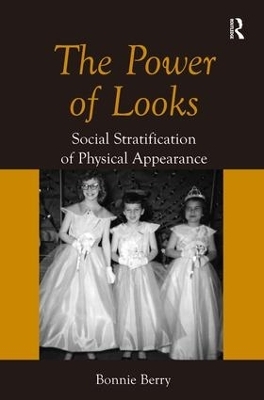
The Power of Looks
Social Stratification of Physical Appearance
Seiten
2008
Routledge (Verlag)
978-0-7546-4758-4 (ISBN)
Routledge (Verlag)
978-0-7546-4758-4 (ISBN)
- Titel z.Zt. nicht lieferbar
- Versandkostenfrei innerhalb Deutschlands
- Auch auf Rechnung
- Verfügbarkeit in der Filiale vor Ort prüfen
- Artikel merken
Is it true that 'better looking' people have more social power? This book provides a fascinating insight into the social stratification of people based on looks - the artificial placement of people into greater and lesser power strata based on physical appearance.
There is a saying that beauty is in the eye of the beholder, implying that beauty is subjective. But can it be said that 'better looking' people have more social power? This book provides a fascinating insight into the social stratification of people based on looks - the artificial placement of people into greater and lesser power strata based on physical appearance. The author analyzes different aspects of physical appearance such as faces, breasts, eye shapes, height and weight as they are related to social power and inequality. For example, tall people are often associated with power, with tall people being seen publicly as more capable and thus more deserving of power than shorter people. The author moreover assesses how people's physical appearance affects their chances of marriage, employment, education, and other social and economic opportunities. The book contributes to and differentiates itself from current literature by emphasizing sociological theory - including constructionism and critical theory - and research to understand the phenomenon of social aesthetics, a term coined by the author to refer to the social reaction to physical appearance.
There is a saying that beauty is in the eye of the beholder, implying that beauty is subjective. But can it be said that 'better looking' people have more social power? This book provides a fascinating insight into the social stratification of people based on looks - the artificial placement of people into greater and lesser power strata based on physical appearance. The author analyzes different aspects of physical appearance such as faces, breasts, eye shapes, height and weight as they are related to social power and inequality. For example, tall people are often associated with power, with tall people being seen publicly as more capable and thus more deserving of power than shorter people. The author moreover assesses how people's physical appearance affects their chances of marriage, employment, education, and other social and economic opportunities. The book contributes to and differentiates itself from current literature by emphasizing sociological theory - including constructionism and critical theory - and research to understand the phenomenon of social aesthetics, a term coined by the author to refer to the social reaction to physical appearance.
Bonnie Berry is director of the Social Problems Research Group in Seattle, Washington and is engaged in research on a number of sociological topics including social inequality, social movements, animal rights, and terrorism. She is the recipient of the 2008 Herbert Bloch Award for distinguished service to the discipline of criminology and to the American Society of Criminology.
The Power of Looks
| Erscheint lt. Verlag | 4.7.2008 |
|---|---|
| Verlagsort | London |
| Sprache | englisch |
| Maße | 156 x 234 mm |
| Gewicht | 440 g |
| Themenwelt | Geisteswissenschaften ► Geschichte |
| Studium ► 1. Studienabschnitt (Vorklinik) ► Med. Psychologie / Soziologie | |
| Sozialwissenschaften ► Soziologie ► Makrosoziologie | |
| ISBN-10 | 0-7546-4758-7 / 0754647587 |
| ISBN-13 | 978-0-7546-4758-4 / 9780754647584 |
| Zustand | Neuware |
| Haben Sie eine Frage zum Produkt? |
Mehr entdecken
aus dem Bereich
aus dem Bereich


